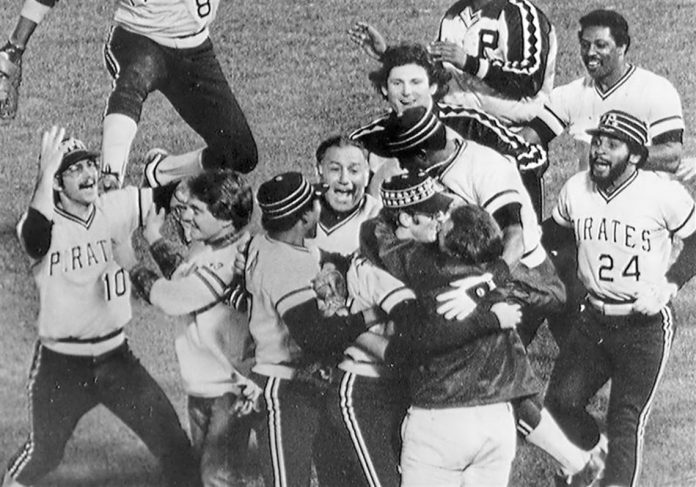The Pirates headed to St. Louis after rain washed away the finale of their series with Atlanta. Don Robinson would open the series with the Cards, facing Bob Sykes. The rainout would be made up in July as part of a doubleheader.
Meanwhile, let’s take a look at how the Pirates assembled their rotation. With Jerry Reuss gone in a trade for Rick Rhoden, and Rhoden unavailable due to shoulder problems, their four primary starters at the beginning of the year were Bert Blyleven, John Candelaria, Don Robinson and Bruce Kison. Jim Rooker probably would have been the fifth starter, but he was unavailable until late May. With all the off-days and rainouts through early May, the team seldom needed five starters anyway.
The future Hall-of-Famer Blyleven needs little introduction. He was a third round draft pick out of a California high school by the Twins in 1969. He needed little time in the minors, getting called up just two months into his first full season, at age 19. From 1971-75, Blyleven shouldered a huge workload for the Twins averaging 37.6 starts, 289.5 innings and 17 wins. He wasn’t happy with his salary, though, and two months into the 1976 season Minnesota sent him to Texas in a six-player deal for Roy Smalley and Mike Cubbage. Blyleven was every bit as good for the Rangers, but in December 1977, a month after signing him to a six-year contract, they traded him to the Pirates in baseball’s first-ever four-team deal. The Bucs lost Al Oliver but also netted John Milner.
Candelaria’s early career path wasn’t a whole lot different from Blyleven’s. The Pirates drafted the 6’7″ lefty out of a Brooklyn high school in the second round in 1972. He didn’t pitch that year, but went straight to full season ball in 1973. After one season at each class A level, he opened 1975 in AAA. He came up to the majors in early June of that year and showed right away that he belonged, going 8-6, 2.76 in 18 starts at age 21. Two years later, the Candy Man went 20-5 and led the NL in ERA at 2.34. Oddly, he also led the league in gopher balls, but he rarely walked anybody so they didn’t do much damage.
Robinson was yet another prep pitching draftee who reached the majors quickly. The Pirates selected him in the third round in 1975; they were sold after Howie Haak watched Robinson throw 15-20 pitches. After an intro in the GCL, Robinson spent one year in class A and one year split between AA and AAA. He opened the 1978 season in Pittsburgh at age 21 and threw 228.1 IP, going 14-6, 3.47.
Kison was still another prep draftee, taken by the Pirates in the 14th round in 1968. The sidearm thrower dominated in the minors, reaching AAA in 1971 and going 10-1, 2.86 in a dozen starts. The Pirates called him up at the beginning of July; like Candelaria and Robinson, he debuted at 21. Even better, he had two standout games in the post-season, throwing four and two-thirds scoreless, two-hit innings in relief for a win against the Giants, and six and a third scoreless, one-hit innings in relief to win game four of the World Series. Kison had some ups and downs over the years with the Pirates, mostly due to arm problems, but mostly pitched well. That was especially true in the post-season, in which he’d allowed just one run and eight hits in 22 innings going into 1979.
The 36-year-old lefty Rooker followed a more difficult career path than the team’s top four starters. The Tigers signed him in the pre-draft era, in 1960, out of a Colorado high school. He wasn’t outstanding in the minors and moved up slowly, not reaching AAA until 1967. He made two relief appearances for the Tigers in 1968, but his real break came after that season, with expansion. Detroit sent him to the Yankees at the end of the season in a minor deal, but two weeks later Kansas City selected Rooker in the expansion draft. He spent the bulk of 1969 in the Royals’ rotation and had a very expansion kind of year, going 4-16, 3.75. Rooker had a solid season for the Royals in 1970, but had a tougher time in 1971-72. After the 1972 season, the Pirates acquired Rooker for young reliever Gene Garber. Rooker won 67 games for the Pirates over the next five years, with consistently better-than-average ERAs. In 1978, though, he started declining, going 9-11, 4.24.



